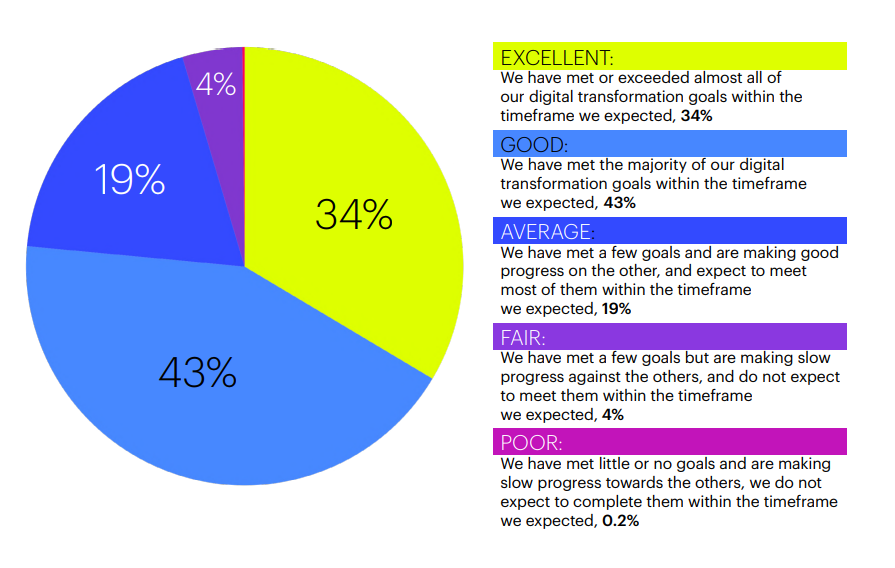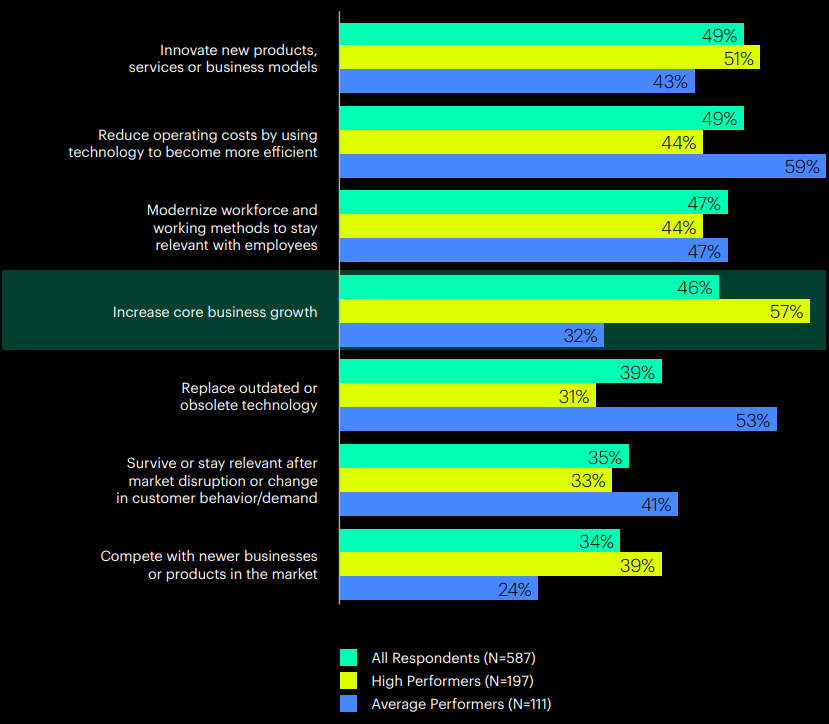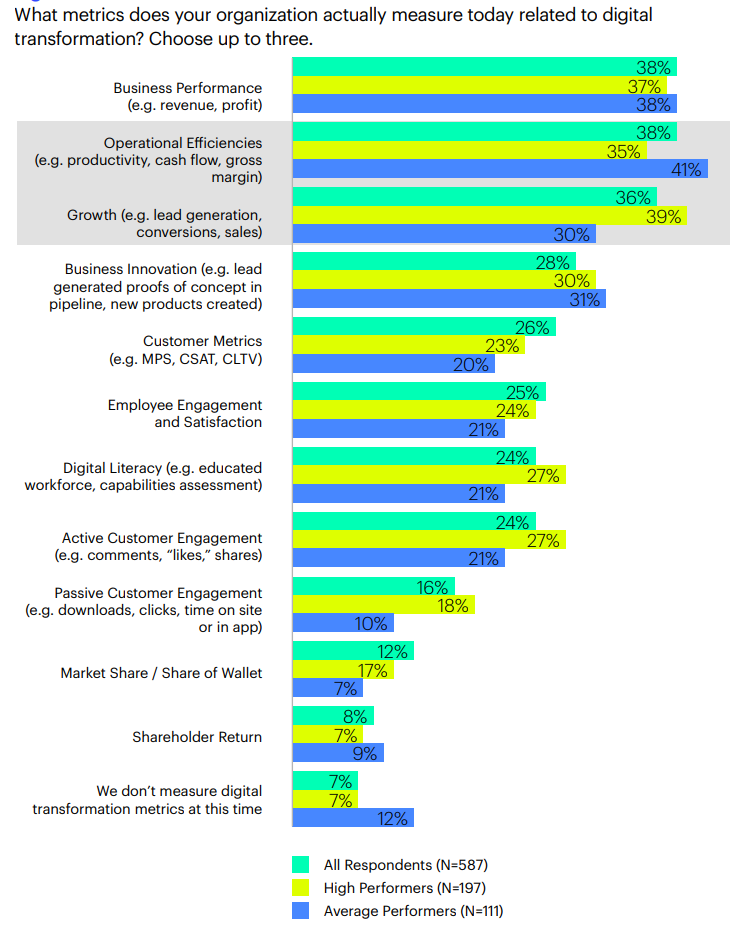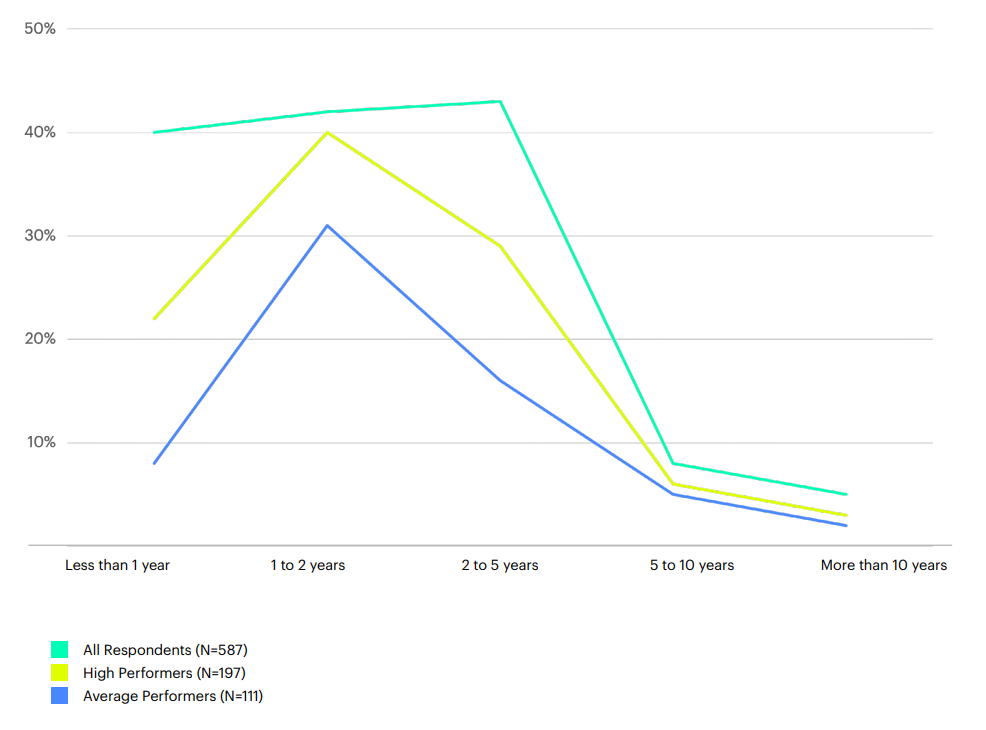Nowadays, Businesses are adapting to the new world of everything digital. The COVID-19 epidemic has accelerated the digital transformation of businesses. Businesses were forced to rush in order to meet customer expectations and establish the digital-first presence that was required by the pandemic’s conditions. Companies that couldn’t, will be ostracized from the market. In this blog, we will look back on the last decade of digital transformation efforts and bring you clear insights into what differentiates successful firms from their competitors. For the first part, we will deeply determine an end goal for digital transformation, creating a clearer path to action and implementation for a business. Let’s dive into it to get more information.
Table of Contents
- The evaluation of the businesses’ digital transformation efforts
- The top reasons for your company’s investment in digital transformation
- Stages of digital transformation
- High performers measure success with growth, average performers measure efficiency
- Expect to see positive transformation results within 1 to 2 years
The evaluation of the businesses’ digital transformation efforts
According to the report that surveyed 587 executives from the US, Europe, and China, across a range of industries. Our goal is to identify the key differences between the businesses that are succeeding at digital transformation, and those who are still struggling to highlight not only their current digital capabilities but the key investments and choices they made that got them to where they are today. Although the information and data used in this report have been produced and processed from sources believed. The opinions expressed herein are subject to change without notice.
By separating the responses of high performers and average performers, survey respondents rated the success of their companies’ digital transformation programs according to the definitions we provided. Interestingly, most respondents expressed satisfaction with their efforts, with 34% ranking their performance as Excellent and 43% describing themselves as Good in the survey. Furthermore, Their high level of success also indicated that most companies have modernized their IT infrastructure, shifted their customer engagement to digital channels, implemented sophisticated tools for employee collaboration, and embraced data-driven principles such as customer journey mapping and data-driven marketing. As compared to previous decades, most organizations have effectively digitally transitioned and are now looking forward to the next phase of transformation. We discovered that organizations that rated themselves Excellent have distinct characteristics that set them apart from the rest.
The top reasons for your company’s investment in digital transformation
By distinguishing the responses of top and average performers for each of our survey questions. we’re able to identify key indicators for what that next phase of transformation might look like. Overall, innovation was the most important motivation for organizations to invest in digital transformation, demonstrating that businesses were increasingly looking to transform in order to develop new goods and services or to reinvent business models. Moreover, 49% of companies cited efficiency as a primary goal, and 47% of companies chose to modernize their personnel as a top priority.
When compared to average performers, high-performing organizations were significantly more likely to identify core business growth as their primary priority (57%), while typical performers were far more concerned with cutting operating expenses and updating technology.
Together, It is obvious that top performers employ digital transformation to develop and innovate, whereas ordinary performers restrict their transformation aims to technological advancements. This puts them in a position of catching up, rather than progressing.
Stages of digital transformation
According to survey findings, The majority of digital transformation efforts are still in their early stages, with 65% of organizations have completed their implementation in less than two years. If you compare the top performers with the average performers, it’s worth noticing that the top performers spent significantly more time implementing their transformation initiatives. And, only 4% of ordinary performers were four years or more into their change, compared to 39% of elite performers who were four years or more into it.
All of these figures support two points: first, it is beneficial to detect and act on disruptive or creative trends as early as possible; and second, the benefits of taking decisive action are not immediate.
High performers measure success with growth, average performers measure efficiency
Almost all companies measure the success of their digital transformation efforts by their impact on business performance. While high performers were more likely to define success in terms of growth (39%), average performers were more likely to define success in terms of operational efficiencies (35%). This clearly indicates a level of purpose for high performers, especially when compared to average performers who are adopting digital transformation to improve existing processes or technologies, which are less visionary in their scope. Further down the list, good performers were more likely to focus on the customer and employee-centric KPIs, such as customer satisfaction and digital literacy. In fact, according to this example, it is obvious that investing in experiences was a better bet than focusing solely on technology.
Expect to see positive transformation results within 1 to 2 years
As the rate of digital innovation increases, the expected rate of return speeds up as well. Most businesses (40%) anticipate seeing good outcomes from their transformation efforts as early as one to two years after starting the process. For top performers, the timescale was considerably shorter, with the vast majority (40%) expecting to see positive outcomes in less than a year. That is significantly shorter than the projected time frame of 2 to 5 years for ordinary performance. According to survey findings, the best-performing organizations have reached a level of digital maturity and cultural preparedness that enables them to notice and adapt to any new disruption or technology which affects their industry swiftly and effectively. This means having access to high-quality data well as technology that is easily integrated and adaptable to new developments. Additionally, it implies a workforce that is adaptable and has a high level of digital literacy, which is encouraging.
In conclusion
Growth and innovation were the top transformation goals for top performers, while average performers cited modernization and efficiency as their top goals. The next phase of digital transformation will be more focused on creating a digital-centric society, and in order for businesses to be successful, executives at all levels must be ahead of the game, strategize for tomorrow’s goals, and prepare their employees for the future. To know more about the transformation approach to transforming your business, Magenest will help you get started with crafting a transformation strategy and road map and learning which solutions are best for your unique business. Keep reading our next blog of the series here.
















